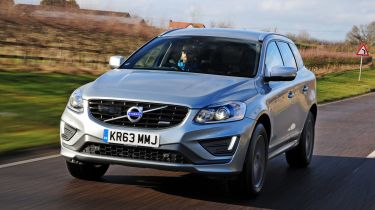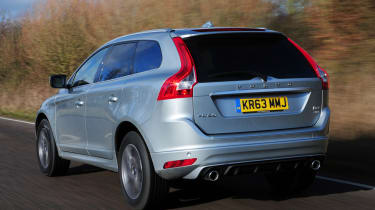Used Volvo XC60 (Mk1, 2008-2017) - What’s it like to drive?
The Mk1 Volvo XC60 focuses more on refinement and comfort rather than sportiness
The Volvo XC60 is a comfortable and refined family SUV that’s in its elements on long journeys. However, you may want to consider alternatives to the first-gen XC60 if you’re specifically looking for something sporty to drive.
Engines and performance
The Volvo XC60 was originally introduced with 163hp and 185hp 2.4-litre diesel engines, as well as a T6-branded 3.0-litre six-cylinder petrol engine with 285hp. Initially, all models were all-wheel drive and, while the diesels could be available with either manual or automatic gearboxes, the petrol was an exclusively automatic affair.
Over the course of the car’s lifecycle, the engine range was shaken up a bit. A 240hp T5 petrol was introduced in 2012, and the T6’s 3.0-litre engine was replaced with a 306hp 2.0-litre powerplant as part of the mid-life facelift. The diesel range was also revised, too, to consist of 163hp D3, 185hp D4 and 215hp D5 models.
Being the most powerful Volvo XC60 variants, the T5 and T6 models offer the best performance – the front-wheel-drive and all-wheel-drive versions of the T5 can accelerate from 0-62mph in 7.2 seconds and 7.1 seconds respectively, whereas the T6 is a bit faster still at 6.9 seconds. The diesels aren’t massively slower than the petrols, though: while the D3 takes 10 seconds to sprint to 62mph from a standing start, all-wheel drive D4s can do the same dash in 9.6 seconds, whereas the front-wheel drive D4 and all-wheel drive D5 are each capable of going from 0-62mph in 8.1 seconds.
When you’re browsing for used Volvo XC60 Mk 1s, do bear in mind some of the engines share the same name – for instance, Volvo confusingly used the D4 and T5 badges on XC60s with 2.0-litre and 2.4-litre engines. Handily, there is a way of telling them apart: front-wheel-drive versions only came with 2.0-litre engines, whereas all-wheel-drive variants only had the 2.4-litre engine.
On the road
Even on the slightly sportier R-Design versions, the Volvo XC60 Mk 1 wasn’t renowned for being a driver’s car. The steering, while fairly responsive, feels artificially heavy and doesn’t give much feedback when turning, and there’s a bit of body lean when you go around corners. If an engaging drive is a big priority, you’ll be better off with something like a BMW X3.
Where the first-gen Volvo XC60 loses ground in the handling stakes, it makes up for it by being quite comfortable. All versions do a good job at ironing out bumps in the road (though the more stiffly-spring R-Design trim and larger optional wheels do have a slight negative impact on ride quality), and good refinement levels means it’s quiet on the motorway.
Being a higher-riding SUV, the Volvo XC60 offers a good view out for the driver, which is handy when manoeuvring into tighter parking spots or when you’re driving around town. The high ride height also means that, while it’s not quite as good off-road as a Range Rover Evoque, the Volvo XC60 isn’t out of its depth on rougher trails, with all-wheel drive models having the edge over front-wheel drive models thanks to their better traction.








